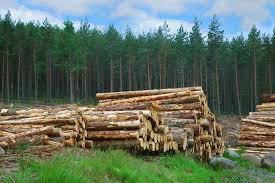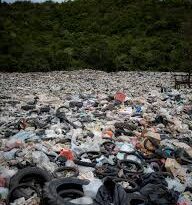How to Clean-Up and Control Specific Pollutants
Specific measures may be required to clean up or contain specific pollutants. Such pollutants include pesticides and metals such as lead. Specific methods for cleaning up or reducing pollutants include bioremediation and integrated pest management for reducing the use of pesticides.
How to Clean-Up and Control Specific Pollutants

Cleaning up Metal Pollution Methods of dealing with metal contamination include:
1. Excavate the soil, treat it, and place it in a landfill dedicated to hazardous wastes. This option is expensive and simply moves the problem “away” without solving it.
2. Stabilize the metals on-site by heating the soil to a temperature high enough to melt the soil into a hard mass (vitrification). Stabilized metals are less likely to leach.
3. Mix the soil with cement and let it solidify.
4. Metals can sometimes be removed from the soil. The method used depends on the metals involved e.g.
5. The Terra Met Process for Cleaning Lead
6. This method has been used to clean up lead and consists of the following steps:
7. Separate the contaminated soil into its components (gravel, sand, silt, and clay).
8. Wash the gravel to remove most lead; then return it to the site. Shake the sand in water. Because lead is denser than sand, it settles to the bottom and is removed.
9. Treat the sand itself with a chemical that dissolves the remaining lead. Return the cleaned sand to the site.
10. Treat the chemical solution to precipitate the lead from it; recover the lead for recycling.
11. Treat the silt and clay using methods similar to those for sand, and return these to the site.
Bioremediation and Phytoremediation
Some trees such as the poplar and willow trees can accumulate organic solvents. Other living organisms can be used to remediate hazardous waste sites contaminated with oil or ammunition or to clean up contaminated water or sediments.
The microorganisms and plants used must concentrate the contaminant of concern, but not be poisoned by it. To use bioremediation successfully, investigate the site to know the pollutants, the characteristics of its soil and water, and microorganisms naturally present. Site microbes are adapted to degrade organic wastes.
Microbial actions work faster with the provision of fertilizer for the microbes. At metal-contaminated sites, microorganisms cannot destroy metals but can convert them to less hazardous forms or lead to metal stabilization e.g. in the conversion of sulfate to sulfide by microorganisms, sulfide reacts with metal contaminants to produce insoluble metal sulfides
(metal mobilization).
Microbes have also been able to concentrate plutonium, a (radioactive element) and natural microbes are used in remediation projects, while bioengineered organisms can degrade specific chemicals.
Phytoremediation is an aspect of bioremediation.
Several plants can accumulate metals from soil or water. Plants that can accumulate high concentrations without adverse effects are hyperaccumulators. Some can accumulate metals up to 40% of their weight. They are harvested and burnt to recover the metals. Sunflowers and some ferns have been used to accumulate some metals.
Advantages
Plants and microbes have a large potential for remediating chemicals. It is cheaper than most other methods and works with natural systems through bioremediation and cannot degrade or take up all the contaminants in the soil or water.
Microorganisms use the organic chemicals they degrade as sources of nutrients for their growth. Low concentrations of the chemicals reduce available nutrients for the growth of microbes.
Read Also: Sources and Management of Groundwater Pollution
Reducing Pesticides through Integrated Pest Management (IPM)
Integrated pest management, is an effective and environmentally sensitive approach to pest management that relies on a combination of common-sense practices. IPM programs use current, comprehensive information on the life cycles of pests and their interactions with the environment.
This information, in combination with available pest control methods, is used to manage most economically, and with the least possible hazard to people, property, and the environment. The IPM approach can be applied to agricultural and non-agricultural activities.
IPM takes advantage of all appropriate pest management options including but not limited to the use of pesticides. In contrast, organic food production applies many of the same concepts as IPM but limits the use of pesticides to those that are produced from natural sources, as opposed to synthetic chemicals.
How does IPM work?
IPM is not a single pest control method but a series of pest management evaluations, decisions, and controls.
Practicing IPM follows a four-tiered approach.
• Set action thresholds
Before taking any pest control action, IPM first sets an action threshold, a point at which pest populations or environmental conditions indicate that pest control action must be taken. The level at which pests will become an economic threat is critical to guiding future pest control decisions.
• Monitor and identify pests
Not all insects, weeds, and other living organisms require control. Many organisms are innocuous and some are beneficial. IPM programs monitor pests and identify them so that appropriate control decisions can be made in conjunction with action thresholds.
This monitoring and identification allow pesticide use only when needed and the right kind of pesticide will be used.
• Prevention
As the first line of pest control, IPM programs work to manage the crop, to prevent pests from becoming a threat using cultural methods such as crop rotation, selecting pest-resistant varieties, and planting pest-free rootstock.
These control methods can be very effective, cost-efficient and present little to no risk to people or the environment.
• Control
When monitoring, identification, and action thresholds indicate that pest control is required and preventive methods are no longer adequate or available, IPM programs evaluate the proper control method both for effectiveness and risk.
Effective, less risky pest controls are used first including highly targeted chemicals, such as pheromones to disrupt pest mating, or mechanical control, such as trapping or weeding.
If further monitoring, identifications, and action thresholds indicate that less risky controls are not working, additional pest controls would be employed, such as targeted spraying of pesticides. Broadcast spraying of non-specific insecticides is a last resort.
Other methods are the use of biological control e.g. natural enemies of pests (e.g. parasitic insect that preys on the pest (e.g. praying mantis). Large numbers of a pest’s eggs can be hatched, raised to adulthood, sterilized, and released.
The sterilized pests mate with normal insects, but no offspring are produced or ensure that enough habitat exists to allow a pest’s natural enemies to grow. An exotic enemy may be imported from a distant location.



